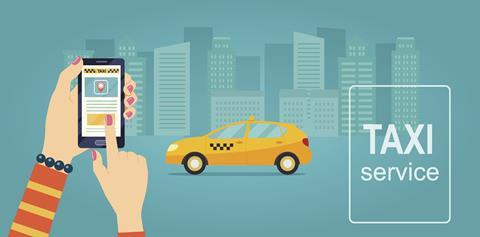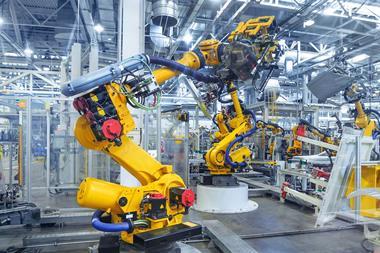Ride-sharing apps like Uber have been both good and bad for taxi drivers. But the introduction of autonomous vehicles is likely to signal a bleak future for all professional drivers – and challenges for insurers

In New York City, Uber dominates the market with ride-hailing apps, which are now responsible for around three-quarters of trips across the five boroughs.
That has been great for the drivers who have found work using the apps. But it has decimated the industry for yellow cabs – and the drivers who paid a high price to get behind the wheel of those iconic taxis.
An antiquated system requiring every driver of a yellow cab to hold a medallion, the supply of which was fixed, created an inflated market for these badges that are affixed to every cab in the city.
At their peak, around five years ago, medallions were trading hands for more than $1 million each, but since the rise of Uber and a crash in the lending market that funded drivers trying to buy the coveted medallions, that price has plummeted by up to 90%.
There were winners and losers in that game – but as companies, including Uber, continue to work on projects to develop self-driving cars, the prospects for all drivers now look bleak.
The effect of autonomous vehicles will be to disrupt the taxi industry, says Christian Schauer, a senior casualty risk engineer at Swiss Re Corporate Solutions. Or at least, he says, taxis as we know them today will not exist – because taxis have drivers.
Drivers will become an economic victim of the shift toward autonomous vehicles because those companies that still employ someone to pilot a car, which could otherwise navigate itself, will have a much higher cost base than their competition.
Who’s liable now?
But it’s not just drivers that will be affected. Insurers are among the firms that will be most significantly impacted by a shift toward autonomous vehicles. The reason? At the moment, the liability for accidents on the roads, for the most part, falls to individual drivers, who buy their own protection.
But when drivers are no longer at the helm, the responsibility for accidents will increasingly fall to manufacturers, or firms responsible for making and maintaining sensors and fixing software glitches.
And that will change the insurance landscape, possibly shrinking the roughly $250 billion US car insurance market by 90% over the next 30 years, according to one estimate by KPMG.
And rather than flowing to traditional motor carriers like Geico in the US or Direct Line in the UK, premiums will instead likely be paid by manufacturers to product liability insurers.
Swiss Re Corporate Solutions’ Schauer says that insurance for car owners – or users – are unlikely to be popular come 2050, as is the case today.
But he foresees a potential situation whereby people purchase coverage specifically to protect themselves against injury caused by them or to them by the robots that will navigate the streets.
He explains, “Nowadays, you are insured, if you make an error and you cause an accident”.
But he says that once control of vehicles is relinquished, people might be able to purchase an overall ‘mobility insurance’ guaranteeing accidents are covered whatever form of transport they are using.
Other vulnerabilities
For firms like Uber, the testing of autonomous vehicles on the street carries not just a liability risk but also a reputational risk, Schauer adds. In 2018, one of the cars Uber had been using to test its self-driving technology hit and killed a pedestrian.
Schauer says that incidents like this can create an inherent risk – a single flaw in the technology can cause significant disruption, with whole fleets taken out of service.
But while the number of accidents involving autonomous vehicles is expected to fall dramatically compared to crashes in cars driven by people, there are other vulnerabilities that human drivers are less susceptible to.
For example, self-driving cars can be hacked. That opens up a whole new world of liability for insurers. Schauer points out that software and hardware failures are a well-known risk, while incidents as a result of a hack, adds a different level of exposure.
Shifting blame
Legal expert and global head of transport for law firm DWF Jonathan Moss says liability will shift proportionately to the person, or device that is controlling a vehicle at the time of an accident.
If, for example, a semi-autonomous taxi is in auto-pilot mode and is involved in a collision, then the manufacturer – or its insurer – will be required to pay for the damage. If, however, the driver has a hand in the damage then they or, again, their insurer, will be liable.
If it’s the machine that is to blame, then Moss says the attribution of liability will become far more complicated. That is because the liability insurers for the manufacturers of each component may seek to shift blame onto the maker of another constituent part or software feature of the vehicle.

















No comments yet